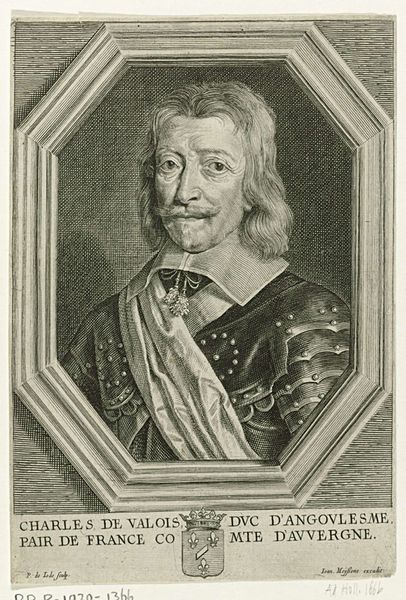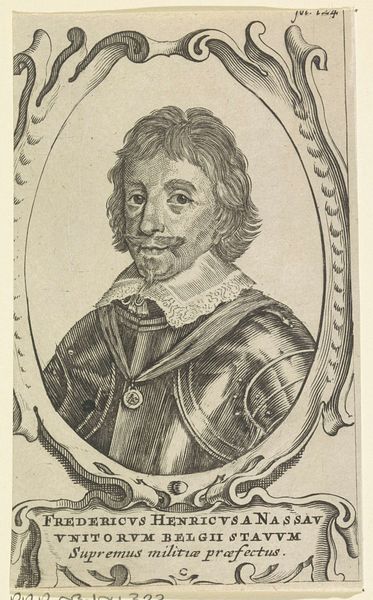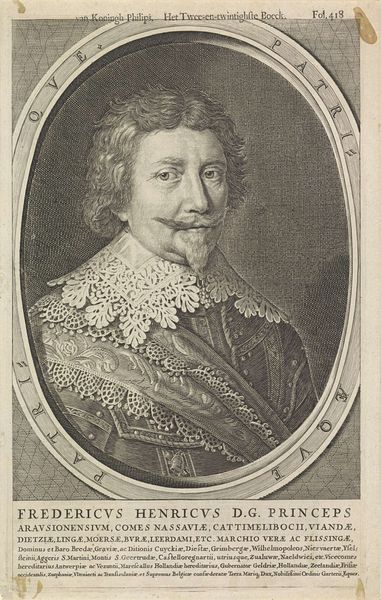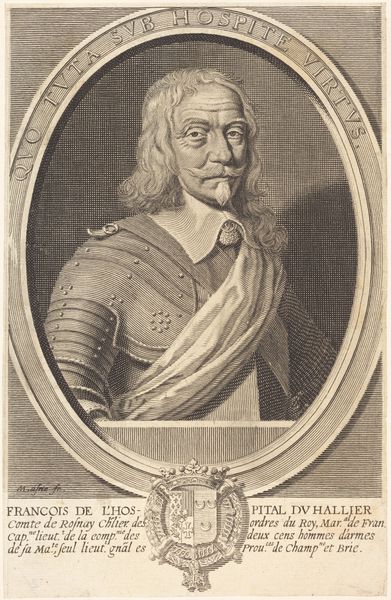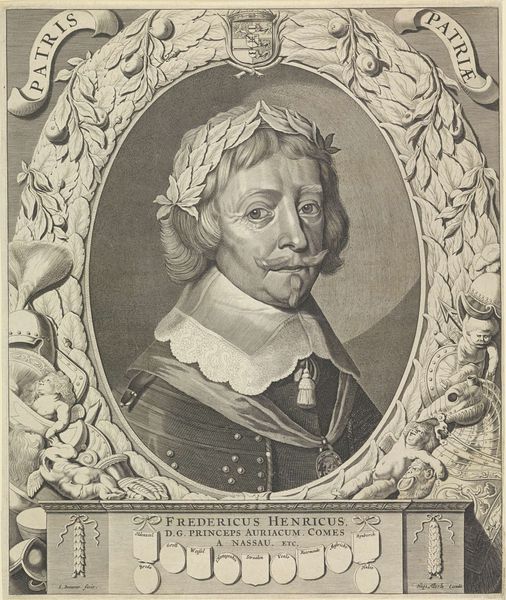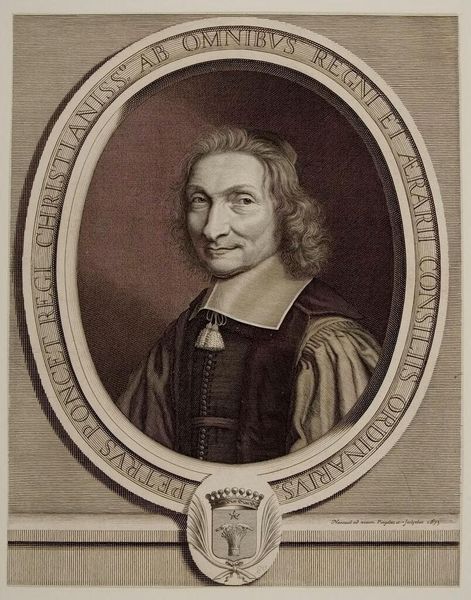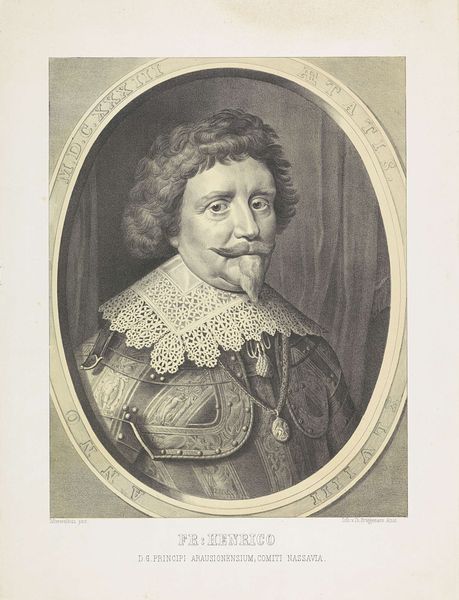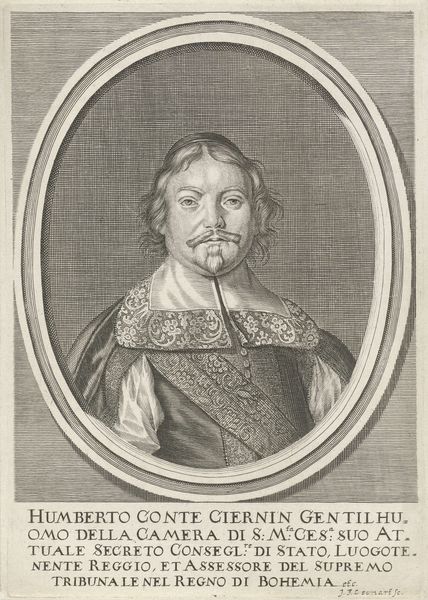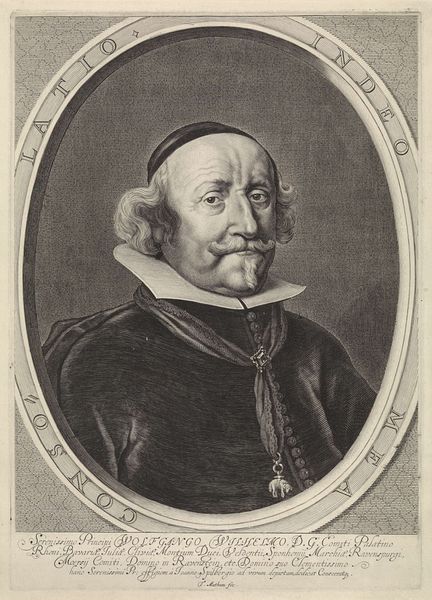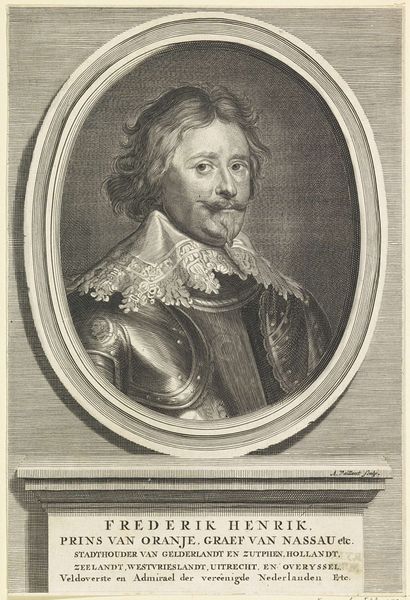
engraving
#
portrait
#
baroque
#
history-painting
#
engraving
Dimensions: height 298 mm, width 176 mm
Copyright: Rijks Museum: Open Domain
Editor: Here we have a circa 1651 engraving by Jacob van Meurs, a portrait of Frederik Hendrik, Prince of Orange. The stark black and white creates such a formal feeling, but what strikes me is how the oval frame almost softens that severity. What do you make of this piece? Curator: It's important to consider that portraits like this functioned as vital pieces of political imagery. The engraving allowed for wider dissemination than a unique painted portrait. This image, framed as it is with that Latin inscription proclaiming Frederik Hendrik's titles, visually reinforced his authority. What do you notice about the armor he is wearing? Editor: Well, it seems symbolic, a standard way to represent leaders at that time. I wonder if he always wore it, or if it was reserved for portraying power. Curator: Precisely. Think about the political context. The Dutch Republic was fighting for independence. Representing Frederik Hendrik in armor connects him to a military narrative, crucial for galvanizing support. How do you think that affected the understanding of the Dutch Republic and its relationship to governance in this historical context? Editor: That's insightful. So the portrait isn't just about him as a person, but about crafting a very specific image for political purposes. A kind of 17th-century PR move, I guess? Curator: Exactly! The distribution of this engraving aimed to solidify his image in the collective imagination of the public and political elites. This makes us question the role that these figures had in influencing artistic taste, wouldn’t you agree? Editor: That’s fascinating to consider; that portraits can be active participants in history rather than just passive reflections. Thank you! Curator: My pleasure, seeing art with historical context is often eye-opening.
Comments
No comments
Be the first to comment and join the conversation on the ultimate creative platform.
